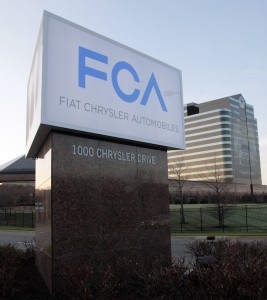
Fiat Chrysler Automobiles N.V. took one step closer to being a reality with the approval the Fiat SpA board of directors for the merger.
One of the final steps of making Fiat and Chrysler one complete company was taken over the weekend when the Fiat SpA board approved the cross-border merger terms that will allow the Italian automaker to become a subsidiary of Fiat Chrysler Automobiles N.V.
The terms are essentially the blueprint for new company’s structure, including being organized in Netherlands, as well as being listed on the New York Stock Exchange and on the Mercato Telematico Azionario in Milan, Italy.
Part of that includes Fiat shareholders receiving one share of Fiat Chrysler stock for each share of stock they own in the Milan-based maker. The plan must be approved by the Fiat shareholders, who will get the opportunity to do so at meeting in the third quarter, according to media reports.
The maker will file an FCA prospectus with the U.S. Securities and Exchange Commission before that meeting of Fiat shareholders. The whole process should be wrapped up before the end of the year.
Fiat purchased the UAW VEBA-held stake in Chrysler in January for $1.75 billion of its own cash, plus another $1.9 billion in Chrysler cash, and $700 million to the VEBA in four installments.
(Mercedes reveals more about the upcoming GT. For more, Click Here.)
The Italian automaker’s presence within the company has been increasing since then including last week when Chrysler expanded its board of directors from nine to 13 members, including adding five Fiat executives.
(Click Here to get details on Lincoln taking the top spot in customer satisfaction.)
Sergio Marchionne, CEO of Chrysler, Fiat and Fiat Chrysler Automobiles, recently laid out his lofty expectations for the merging companies. The Euro-American company expects to see global sales surge from the 4.4 million vehicles it sold in 2013 to somewhere on the order of 7 million by 2018.
(To see how the looming crisis in Iraq could impact gas prices, Click Here.)
The maker forecast its net income would jump from a modest 900 million Euros for 2013 to 5 billion Euros in 2018, or a predicated 4 Euros per share. Margins, meanwhile, would climb by as much as three percentage points, to somewhere between 6.6% and 7.4%.
In wrapping up his session, Marchionne stressed that the company’s new strategy should help it surpass the minimum 6 million vehicle minimum he believes it needs to be competitive in an industry increasingly dominated by giants. In fact, the seventh-ranked Chrysler now has “the potential of moving one step higher in that ranking” if it can hit its targets.
